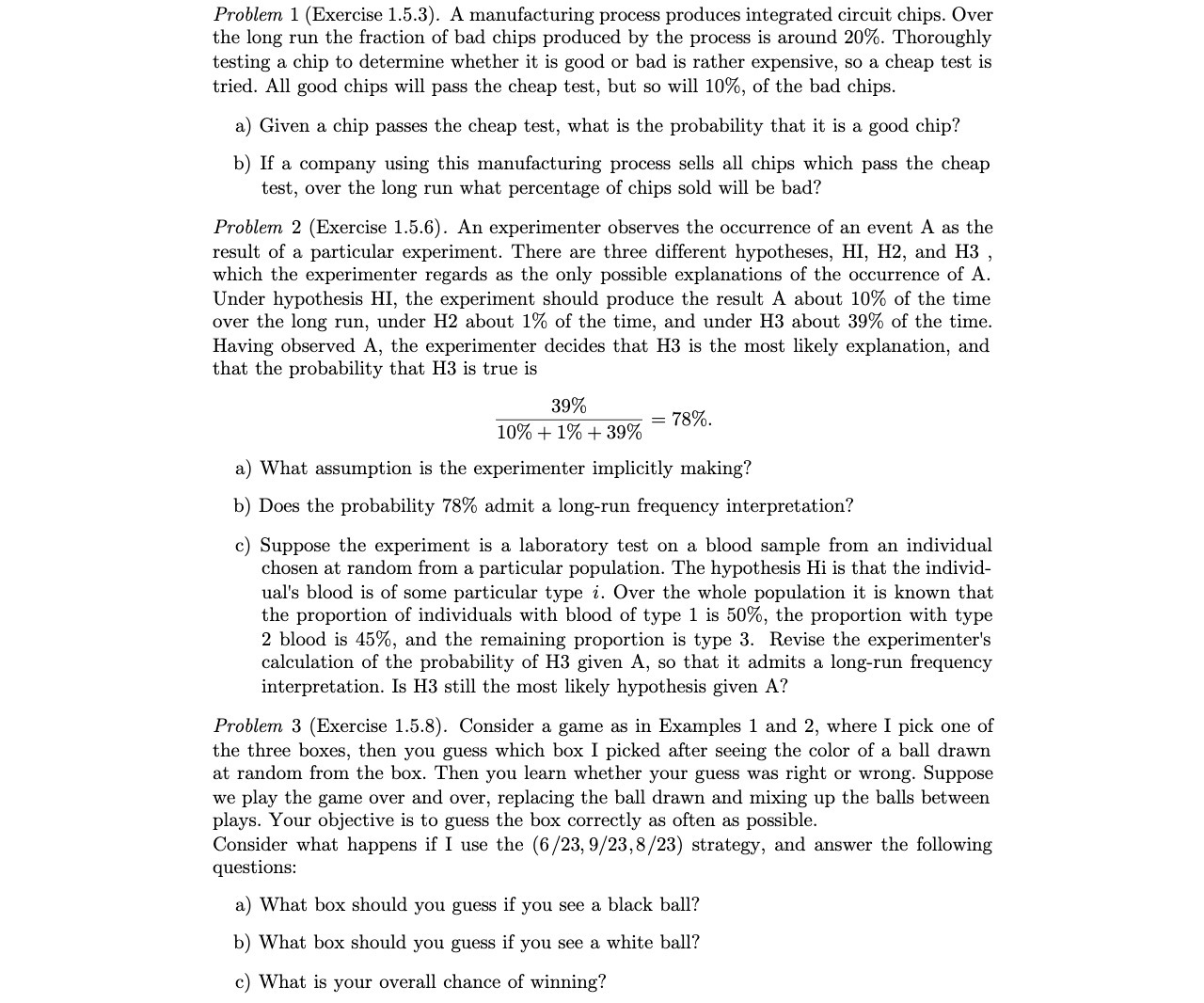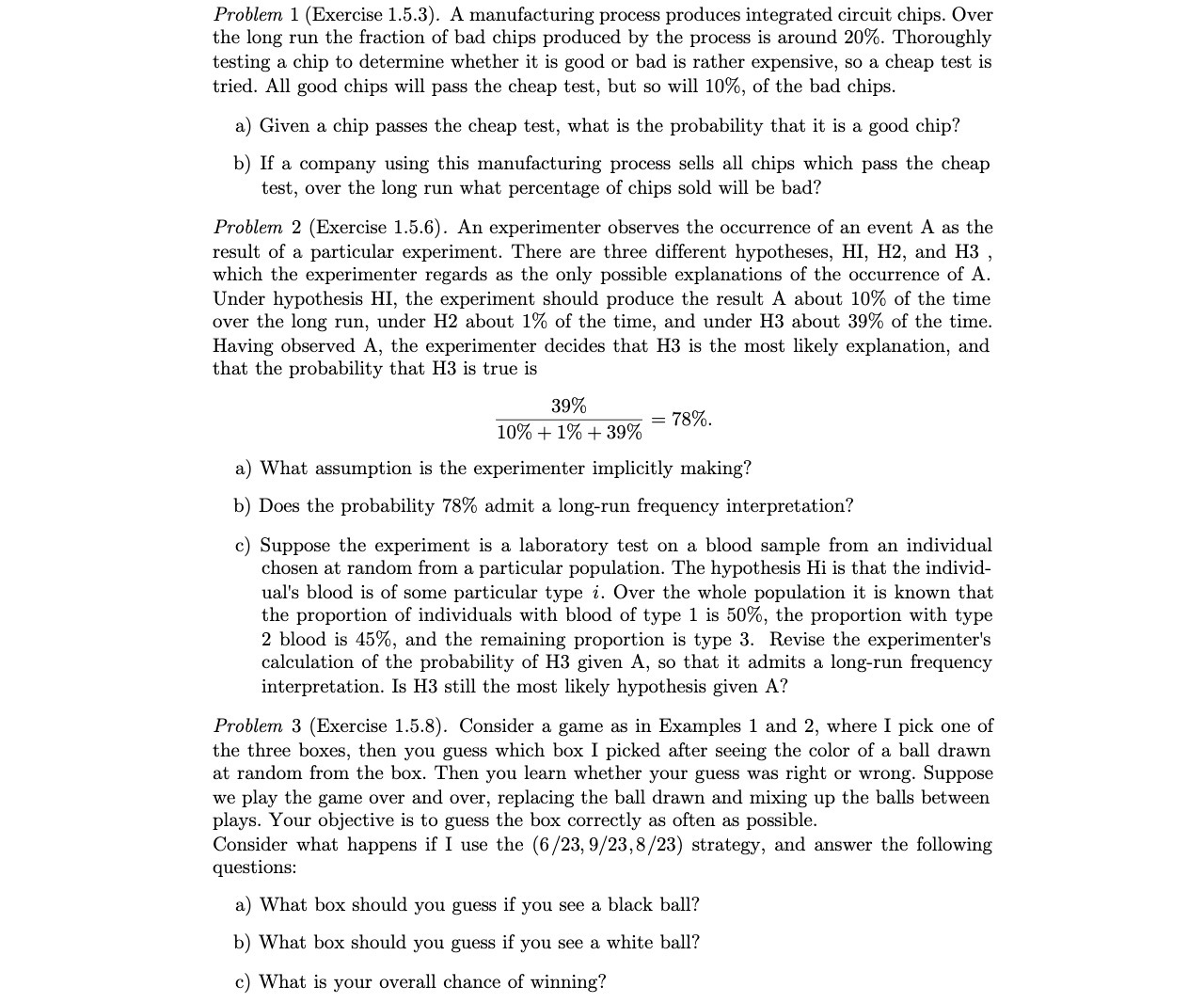
Problem 1 (Exercise 1.5.3). A manufacturing process produces integrated circuit chips. Over the long run the fraction of bad chips produced by the process is around 20%. Thoroughly testing a chip to determine whether it is good or bad is rather expensive, so a cheap test is tried. All good chips will pass the cheap test, but so will 10%, of the bad chips. a) Given a chip passes the cheap test, what is the probability that it is a good chip? b) If a company using this manufacturing process sells all chips which pass the cheap test, over the long run what percentage of chips sold will be bad? Problem 2 (Exercise 1.5.6). An experimenter observes the occurrence of an event A as the result of a particular experiment. There are three different hypotheses, H1, H2, and H3 , which the experimenter regards as the only possible explanations of the occurrence of A. Under hypothesis HI, the experiment should produce the result A about 10% of the time over the long run, under H2 about 1% of the time, and under H3 about 39% of the time. Having observed A, the experimenter decides that H3 is the most likely explanation, and that the probability that H3 is true is 39% 10% + 1% + 39% 2 78%\" a) What assumption is the experimenter implicitly making? b) Does the probability 78% admit a long-run frequency interpretation? c) Suppose the experiment is a laboratory test on a blood sample from an individual chosen at random from a particular population. The hypothesis Hi is that the individ- ual's blood is of some particular type 1'. Over the whole population it is known that the proportion of individuals with blood of type 1 is 50%, the proportion with type 2 blood is 45%, and the remaining proportion is type 3. Revise the experimenter's calculation of the probability of H3 given A, so that it admits a long-run frequency interpretation. Is H3 still the most likely hypothesis given A? Problem 3 (Exercise 1.5.8). Consider a game as in Examples 1 and 2, where I pick one of the three boxes, then you guess which box I picked after seeing the color of a ball drawn at random from the box. Then you learn whether your guess was right or wrong. Suppose we play the game over and over, replacing the ball drawn and mixing up the balls between plays. Your objective is to guess the box correctly as often as possible. Consider what happens if I use the (6/23, 9/23,8/23) strategy, and answer the following questions: a) What box should you guess if you see a black ball? b) What box should you guess if you see a white ball? c) What is your overall chance of winning








